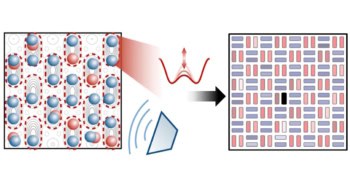Physicists in the US claim to have found how undesirable sticky friction or “stiction” could be minimised in microscale machines. By measuring the adhesive forces of silicon wafer, Deli Liu and Nancy Burnham of the Worcester Polytechnic Institute, in collaboration with semiconductor-device manufacturer Analog Devices, have discovered that - perhaps surprisingly - stiction is lowest when the surfaces are not smooth but when they have a certain roughness (Appl. Phys. Lett. 91 043107).
Stiction is a problem in nano- and micro-electromechanical systems (NEMS and MEMS) whereby the tiny components stick together, often greatly reducing the reliability and long-term durability of these devices. It occurs when capillary, van der Waals and electrostatic forces between surfaces overpower the built-in restoring forces of the overall structure. In smaller systems the effect is more pronounced because of a larger surface-area-to-volume ratio.
Practical methods to eliminate stiction-related failures involve designing devices with high mechanical restoring forces, or by using “passivants” – special treatments for reducing surface energy. Some researchers have employed time consuming and costly molecular-dynamics simulations to see how roughness affects stiction, but so far these have not given any useful insights. Liu and co-workers, however, have performed experiments that demonstrate a correlation between surface roughness and stiction – a result that they hope could be used to minimize stiction in MEMS, and possibly NEMS, components.
The US team started with a series of silicon wafers, each with a different average roughness – that is, with different sized lumps or “asperities” on the surface. They then brought the cantilevers of an atomic force microscope with various tip radii into contact with a single asperity on the surface and measured the size of the adhesive force.
The researchers found that the adhesive force falls quickly as the average roughness is increased, but reaches a minimum beyond which it steadily rises again – in other words, there exists an optimal roughness. This value increases with the radius of the cantilever tip.
According to Liu and co-workers, this is because a tip resting on a completely smooth surface is strongly attracted by the majority of the surface’s adhesive forces. A small asperity on a slightly roughened surface acts to distance the tip from the surface, so these forces are less pronounced. But too large an asperity on a very rough surface will have its own strong adhesive forces which cancel the distancing effect.
“Our work suggests a promising way to minimize adhesion between two surfaces by tuning asperity height to feature-size in MEMS devices,” Liu told physicsworld.com. “We didn’t quantify by how much stiction could be reduced, but our model can provide a useful predictor of the behaviour of adhesive contacts down to the nano scale.”



